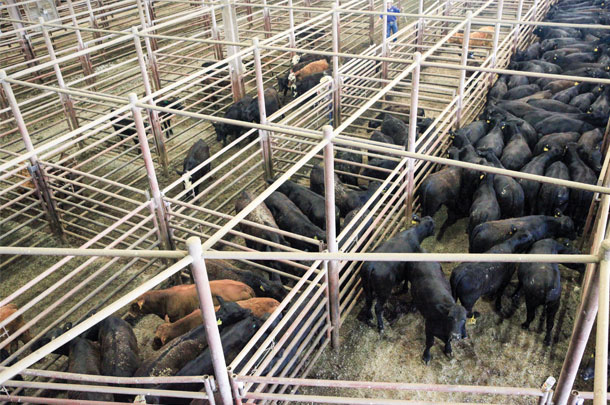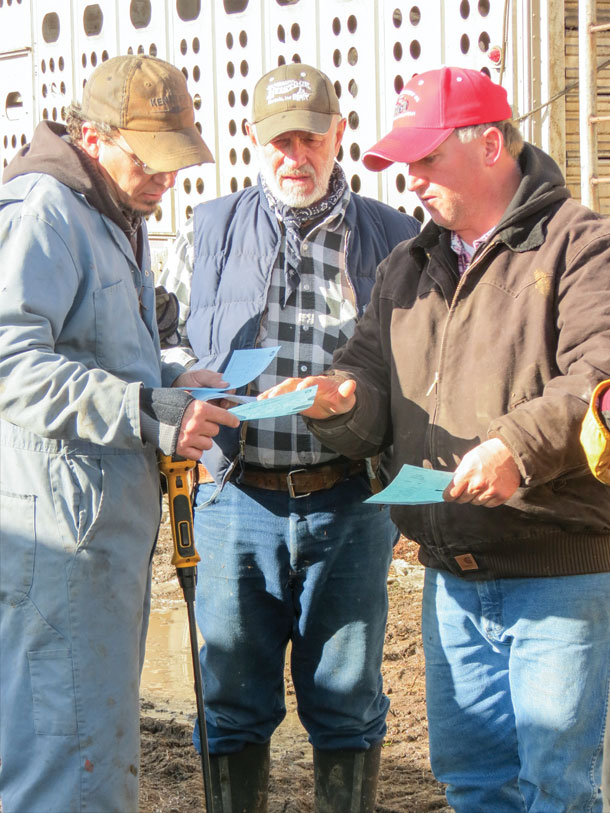As of Dec. 18, all truck drivers who are currently required to complete paper records of duty status will be required to adopt and use electronic logging devices in place of their current paper system.
Although it may sound convenient, less paper, less mess and having a cleaner cab will come with stricter protocols, something the livestock industry hasn’t exactly adhered to in the past.
“It’s a concern for the livestock industry to have their hours electronically logged,” says Jon Samson, an executive director with the American Trucking Association Inc. “There will be less flexibility, which in hauling live animals you have to have.”
The current hours of service rules limit commercial motor vehicles to a maximum of 11 hours of driving time and 14 hours of on-duty time – meaning anything done in and around the truck. This is followed with 10 consecutive hours spent off-duty.
The problem
As many livestock haulers can attest, there are a lot of variables that go into hauling cattle. The brand inspector might not be on time, sorting cows from calves may take three hours instead of the planned two, or a cow might get turned around in the loading process.

“I don’t think they took those variables into consideration when they made these hour of service rules,” says Mike Short, a trucker based in northwest Kansas. “If there was a way you could be loaded in 15 to 20 minutes after you get to the place and have the rest of the time to drive, that would be fine.
And if all the loads were in 600 miles, you could pretty much do that in 11 hours, but there’s so many times where the loads are 700 to 800 miles.”
Short goes on to explain that he and his three brothers make a living hauling cattle to and from states like Montana, Nebraska, Colorado, the Dakotas, Wyoming and even, at times, Missouri.
Although driving through some of these “Big Sky” states may seem almost picturesque in nature, it also creates problems when trying to stay in the bounds of the hours of service rules.
“They expect us to pull over wherever we are and shut down for 10 hours – and then we can go again,” Short says. “You and me both know that’s not always possible. Once calves or even cows are loaded, we’ve got to get them to their destination as quick as possible.”
Traditionally, if something went wrong, whether that’s during loading or somewhere along the trip, livestock haulers have had the flexibility with the paper logs to go an extra hour or two to make it to their final destination. But now with the electronic logging devices, Short says, “Once the truck starts, the day starts.”
Adding to that, Temple Grandin, a professor of animal science at Colorado State University, says the regulation will pose some serious animal welfare concerns. She explains that a lot of the time it’s just better for the cattle to go straight through rather than prolonging the trip with breaks. She’s concerned that “rest stops could potentially become stress stops.”
“It’s like an airline pilot running out of time: When he runs out of time, you can’t fly, and you get stuck at the wrong airport,” Grandin says. “If the driver runs out of time in the wrong place, those cattle are spending a whole bunch of extra time on that truck, and they are more likely to get sick. It’s going to be a mess.”
Seeking an exemption
In an attempt to receive some flexibility for livestock haulers, the American Trucking Association’s agricultural division, along with the American Cattle Transporters Advisory Group, has expressed their concerns to the motor carrier administration.
“We have spoken with the Department of Transportation and the Federal Motor Carrier Safety Administration to explain to them that hauling live animals is much different than hauling T-shirts. There are a few other factors that come into play,” Samson says. “What we are trying to do is provide some sort of an exemption, or some sort of flexibility piece, at the end of those hourly time limits.”
Right now, these groups are in the process of petitioning the Federal Motor Carrier Safety Administration through a formal letter stating the problems in the rule and their solution. They hope to have a comment period to the public available sometime this spring.
Both groups believe the sticking point in their argument is the fact that livestock haulers make up such a small portion of the total amount of commercial carriers on the road. “It will benefit the industry greatly, but it’s not going to negatively impact the overall safety of the roads because of the amount of people who will actually take advantage of it,” Samson says.
The domino effect
Like any major change in the beef industry, it is likely to affect those down the line – and this regulation is no exception. Although it may seem like primarily a “trucking issue,” it will have more of an impact on the cow-calf producer, feedlot manager and packing plant than most realize.
According to Tom Whitaker, an executive director for the Kansas Motor Carriers Association, if some sort of exemption or relief for livestock haulers isn’t warranted, it’s going to completely change the way the livestock industry does business. And he strongly believes it will be the latter.

Whitaker says it’s all going to come down to the shipper. “If they want to have trucks to move cattle and livestock the way they are used to, they’re going to have to change the way they do business and the logistics of how they get their livestock from point A to point B. They are going to have to eliminate waiting time so they don’t eat up the hours in their truckers’ day.
Because right now, the truckers are doing what the shippers want them to do, and they’re finding a way to do it, but with the electronic logs that is no longer possible.”
Whitaker explains that there is an exemption for those that have a truck that’s a model year ’99 or older, since they don’t have electronic capabilities, and a 150-air mile exemption to and from a farm or a ranch to market. However, in the wide-open West, that doesn’t get anyone very far, Whitaker quips.
Echoing Whitaker’s comments, Short says, “You know there’ll probably be a lot of drivers that are just going to quit. There are some of us that are close to retirement age, and rather than mess with that and worry about being in violation all the time, they’ll just quit. I think the livestock industry is so short of drivers that really have any knowledge of livestock; it’s really going to put the industry in a bind.” ![]()
PHOTO 1: A new law requiring electronic logging devices in trucks may be convenient in nature, but it could pose potential problems all the way down the beef supply chain.
PHOTO 2: A lot of truck drivers’ time is “eaten up” by waiting to load and unload the cattle.
PHOTO 3: Producers should talk with their truck drivers to see how this regulation will affect them. Staff photos.

-
Cassidy Woolsey
- Editor
- Progressive Cattleman
- Email Cassidy Woolsey






